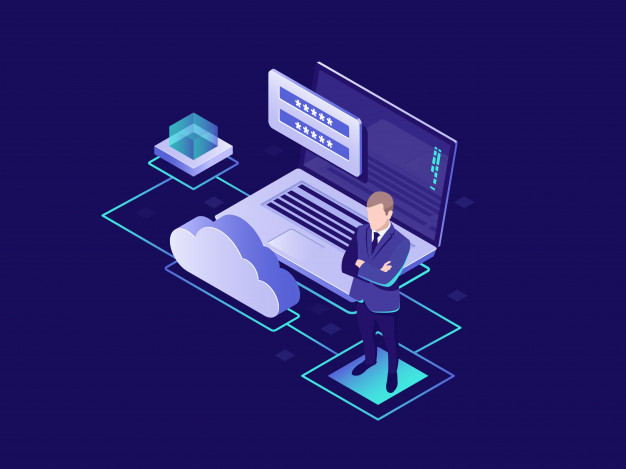The COVID pandemic has disrupted many industries and has fueled the growth of others, such as cloud computing. According to the Flexera 2021 State of the Cloud report, 90% of companies surveyed are increasing their cloud usage due to the pandemic and the resultant digital shift. This is good news for cloud service providers that are constantly expanding their horizons to help companies leverage the power of their cloud services. One such cloud offering that has seen a lot of interest and growth during the pandemic is identity-as-a-service (IDaaS).

What is IDaaS?
IDaaS is a SaaS offering that enables authorized users to quickly access the required resources of the organization. It authenticates and authorizes users through many ways, such as a single sign-on, multifactor authentication, and more. In other words, IDaaS is an identity and access management (IAM) solution deployed on the cloud and offered as a service by cloud service providers.
According to Gartner, there are three critical components in IDaaS, and they are:
- Provisioning users to cloud applications
- Authenticating and authorizing users to access applications
- Monitoring and reporting access for compliance and security
All these three IDaaS components apply to both internal and external systems that involve employees and customers, respectively.
Why use IDaaS?
So, why does your business need IDaaS? What advantages can it offer?
Updated infrastructure
Over the last few years, the number of cyberattacks has increased because hackers have access to better tools and are more tech-savvy than the average employee.
To some extent, this increase in data breaches is also due to the organization’s outdated infrastructure. From an organization’s standpoint, it’s too expensive and infeasible to upgrade their network infrastructure once every few years to make it more secure. This is often seen as one of the biggest reasons for the growing increase in hacking incidents.

In IDaaS, it’s the responsibility of cloud service providers to regularly upgrade systems and prevent breaches. Since security is an integral part of their offering, these cloud providers are abreast of the latest threats and technologies, regularly update their network, handle patches and upgrades, and employ skilled security people to monitor services.
All these mean that the chances for data breaches are significantly reduced with IDaaS.
Advanced access mechanisms
Besides updated infrastructure, IDaaS providers also use advanced access mechanisms to streamline user activity and ensure that only authorized personnel access a resource.
IDaaS uses a combination of authentication mechanisms such as multifactor authentication, single sign-on, biometrics, passwordless authentication, and more to control user access tor̥esources. At the same time, these IDaaS solutions also make it convenient for users to access resources when needed.
In this sense, IDaaS balances security and convenience to protect critical resources.
Meets compliance
Compliance with statutory regulations and standards is one of the biggest challenges today. In addition to meeting security standards, organizations have to meet stringent laws related to data privacy, ensure transparent data practices, and allow users to stay on top of how their data is used.
Organizations find it increasingly hard to meet these stringent compliance regulations with their in-house IAM solutions.
IDaaS, on the other hand, helps organizations to comply with these regulations through features such as self-service account management, report generation, log maintenance, and more.
Easy to use
IDaaS is not just for security — it helps with marketing too!
A simple and quick registration process on customer-facing applications will boost the conversion rates for organizations as more customers would be forthcoming to the idea of a secure login to access the organization’s services.
Further, a single sign-on across all the organization’s resources is sure to add to a user’s convenience. Take, for example, the Google login that can be used for a wide variety of applications such as Maps, Gmail, Google Drive, and more.
Such streamlined access enhances the rate of adoption among employees and makes it easy for your marketing teams to onboard more customers.
Custom solutions
IDaaS can be customized to meet an organization’s specific requirements as it supports different identity managements such as federated, social, centralized, and more. Most IDaaS services support mobile application management as well, so your customers and employees can log in through the web or mobile. Further, it can be designed separately for employees and external customers or as a unified IAM solution, depending on the organization’s needs. These can be modified anytime as well.
Reduces overhead
As with any cloud service, IDaaS also reduces provisioning and maintenance costs. You don’t need dedicated resources to handle your IAM, and in turn, this saves time, effort, and money. Overall, IDaaS offers flexibility for organizations without compromising on security and is cost-effective. Now that you know what an IDaaS can do for your organization, the next question is how do you choose an IDaaS service that suits your organization.
Choosing an IDaaS provider
Before we go into choosing an IDaaS provider, note that any IDaaS solution is only a part of your organization’s overall IAM strategy. This is because IDaaS only handles the technology side of IAM and doesn’t encompass your organization’s security policies and practices.
This also explains why IDaaS is mainly accessed through an API that you can integrate with your infrastructure. So, you will be using the features of IDaaS for provisioning and streamlining user access and can generate reports when needed. However, the IDaaS solution will still be a part of your network.
With this in mind, here are some aspects to consider before you pick on an IDaaS provider.
A seamless integration
If you already have an in-house IT team with a set of tools and processes in place, look for an IDaaS solution that would seamlessly integrate with the existing setup. This is important from an operational standpoint and can boost the motivation of your IT team.
Cost-value analysis

Any third-party solution, including IDaaS, must fit in with your IT budget. But remember, the cheapest solution need not be the best one for you, so instead, do a cost-value analysis and see how you can get the maximum value within your budget.
Ease of use
Your customers and employees must find it easy to use the chosen IDaaS solution. This usability is critical for adoption and to reduce the number of helpdesk calls and the resultant workload on your IT team. Consider your employees’ and customers’ demographics while deciding on an identity solution and aim to enhance the overall user experience. Consider your future prospects and their demographics as well.
Meets your compliance standards
Every industry has to adhere to a specific set of compliance standards, so make sure you know what these standards are and how an IDaaS solution can comply with them. Thus, these are some of the factors to consider. While this may not be an exhaustive list, it’s sure to give you a good start in identifying the IDaaS solution that would work best for you.
Why IDaas has become a pandemic tool
Identity-as-a-solution is a SaaS cloud computing solution where the provider handles the authorization and authentication of users to an organization’s resources. It offers many benefits such as better security, a good user experience, compliance with industry standards, and more.
Have you tried IDaaS? Please share your experience with our readers.
Featured image: Pixabay



